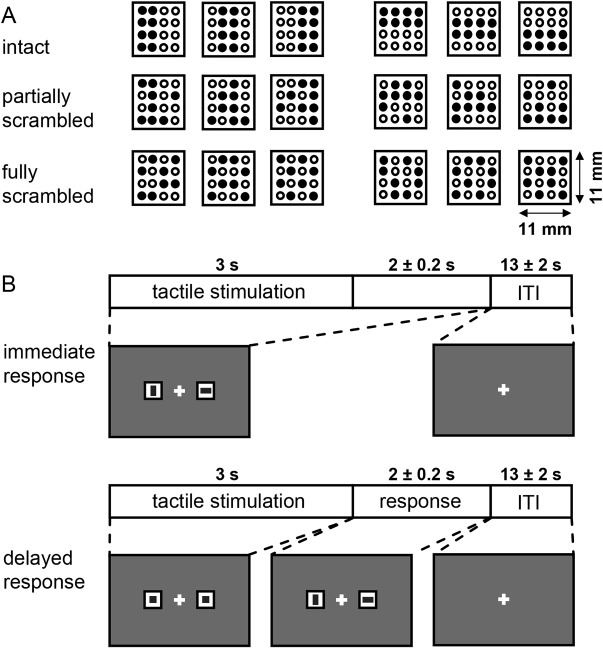Figure 1.

Tactile stimulus and trial structure. A. There were three quality levels in the tactile pattern discrimination task, namely intact, partially scrambled and fully scrambled patterns representing either a vertical (left columns) or horizontal object (right columns). In intact patterns (top row), objects were defined by eight vibrating pins (filled circles; empty circles represent inactive pins that remain retrieved beneath the panel surface). In partially scrambled (middle row)/fully scrambled patterns (bottom row), 2/4 object‐pins were inactive while 2/4 non‐object pins were vibrating and served as distracters, respectively. The task was to discriminate whether the pattern reflected a horizontal or a vertical bar relative to the finger axis. B. There were two task conditions. In both conditions subjects initially received a tactile stimulation for 3 s in order to perform the discrimination task. In the immediate response condition, subjects were instructed to report the perceived orientation by making a quick saccade toward the corresponding icon (horizontal or vertical bar, randomly placed left or right) as soon as a decision was made. The response cues were present at the onset of the tactile stimulation and lasted 5 ± 0.2 s. In contrast, in the delayed response condition, they could only respond when the neutral icons (squares), presented during stimulation (3 s), turned into the response options (lasting 2 ± 0.2 s) at the offset of the tactile stimulus. Both types of trials were presented pseudo‐randomly interleaved and were counterbalanced within and across sessions. Figure was originally published in Li Hegner et al. [2015], Human Brain Mapping.
